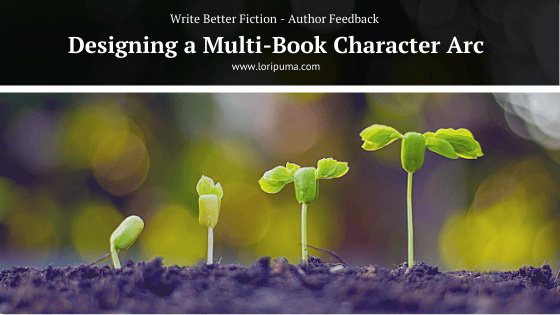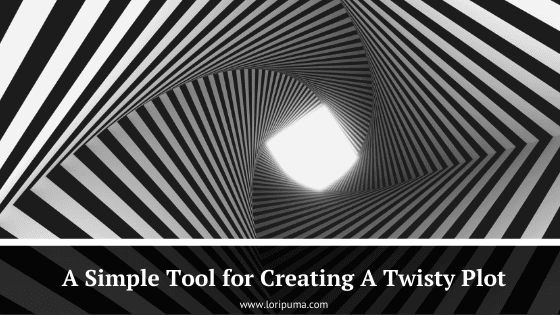The Basic Elements of a Page-Turning Novel
/Would you like to write a book that gets rave reviews and keeps readers up way past their
bedtimes?
See how to combine the basic elements of a novel—scene, sequence, act, global
story—so you can keep readers turning pages.
The Basic Elements of Every Novel
The most basic building block for a novel is the scene, a unit of story that is typically 1,000 to 2,000 words long, occurs at a specific time and place, and where at least one character experiences a change in life circumstances. Writing a good scene is the fundamental skill of writing a well-crafted novel.
What's a change in life circumstances? Let's look at the opening scene of Edith Wharton's classic novel House of Mirth for an example. (Available free at the Gutenberg Project website.) In this scene, Selden and Lily Bart are each alone at the train station. By the end, they're together at the threshold of Mr. Selden's flat. The shift that happens, then, is one from alone to together.
Scenes combine to form sequences. While each scene has a change in life circumstances, when scenes are combined into a sequence they create a larger shift in life circumstances. The opening sequence of House of Mirth, which also happens to be the first chapter, is made up of three scenes.
At the end of the opening scene, Lily agrees to visit Mr. Selden's flat for tea, even though it's taboo for an unmarried woman to visit a bachelor's flat by herself. In the second scene, they have tea and tease each other about their life choices. In the third scene, Lily tries to leave the apartment unnoticed. She fails and runs into a char-woman (i.e. a cleaning lady) and an acquaintance. At the beginning of the sequence, Lily is a woman who is accepted by high society. By the end of the sequence, she's been caught taking a risk that has the potential to damage her prospects for marriage in high society. We might call the shift one from reputation is safe to reputation in danger.
The Units of Storytelling
The Units of Storytelling. Scenes are the basic building block. Scenes combine to create a sequence. Sequences combine to create an Act. Acts combine to create a global story that lasts from beginning to end of The novel.
Sequences combine to form acts, units of story that represent large, irreversible change in the life or lives of your characters. The Story Grid defines novels as having three acts and gives each act a name. Act One is the Beginning Hook. Act Two is the Middle Build. Act Three is the Ending Payoff.
Each act represents a large, irreversible change in the life circumstances for one or more of the characters. In the second scene of House of Mirth, Lily teases Selden, indicating that she knows he doesn't want to marry her. As the reader, you can see that these two have chemistry, whatever they may say. The Beginning Hook ends in the sixth chapter where Selden and Lily have an intimate moment. In that scene, he admits that he does want to marry her. Lily admits she has feelings for him too. Yet, she rejects him and continues pursuing a richer man. The shift in the act is from flirting to rejection. Once Lily rejects Selden's marriage proposal, their relationship has been irreversibly changed.
Each act tells a portion of the global story, the largest unit is the global story, which encompasses the shift in circumstances from the beginning to end of an entire novel or film. Lovers meet and then commit. The enemy attacks and is ultimately defeated. The reluctant hero accepts the challenges and returns triumphant from her quest. In House of Mirth, Lily falls from the heights of high society to poverty.
Let's look more closely at why we need changes in life circumstances in a story as well as the three different types of circumstances a writer can use to show change.
How to make readers care with each unit of story
When a unit of story has a change or shift in life circumstances, editors say that it works. Part of what triggers curiosity is the ability to infer cause and effect and predict what will happen next. If something changes in a scene, then, a reader can infer cause and effect and predict what might happen next. They turn the page to see if their prediction comes true.
Shifts (and predictions) come in three different varieties: a change in basic human needs, a change in a relationship, or an internal change in a person's feelings or worldview.
The first type of shift involves basic human survival needs and is the easiest one to identify. Action, Thriller, Crime, War, and Western stories often start with a scene that shifts from safe to danger. It’s just a normal day everybody going about their business. Then, KA-BLAM!!! A bomb explodes. Other survival shifts include hungry to fed, sated to thirsty, overheated to freezing, or well-rested to exhausted.
Second, a shift can happen in a relationship. A middle-grade novel might shift from alone to befriended in the Beginning Hook. A love story might shift from coupled to broken up in the Middle Build. The global story for a family drama might shift from part of the family to disowned.
The third type of shift is more subtle. The change that occurs is in a character’s feelings or perspective. Some possible shifts are from outraged to resigned, hopeless to hopeful, or blaming to forgiving. These are the shifts that happen in quieter moments of suspenseful stories and the type of shifts that predominate in stories about growing up or learning a moral lesson.
The mechanics of making readers care
A more detailed way to think about how to create shifts is to use the Five Commandments of Storytelling. Shifts happen when a unit of story contains each of these five components:
Inciting incident — An event that upsets the balance of your protagonist's life.
Progressive complications — An event, or series of events that increases what’s at stake for your protagonist. (This can be negative: your protagonist is lost in the desert and then she drinks the last of her water. Or it can be positive. Your protagonist gets the new job and then he wins the lottery.)
Crisis — A question that forces the protagonist to make a choice between options.
Climax — The protagonist chooses between the options.
Resolution —The consequences of the protagonist’s choice.
Five Commandments work in the opening sequence of House of Mirth
Let's look at the Five Commandments for the opening scene and the three-scene opening sequence of House of Mirth.
Five Commandments for the Opening Scene
Inciting incident — Lily Bart misses her train.
Progressive complications — The next train isn't for two hours. She runs into Mr. Selden. It's hot and she's thirsty. Lily wants to go someplace quiet, not someplace where she'll be expected to socialize. Mr. Selden invites her up to his flat for tea.
Crisis — Will Lily break taboo and accept a bachelor's invitation to come up to his flat or will she conform to society rules and decline?
Climax —Lily accepts without hesitation.
Resolution — Lily risks her reputation as a marriageable girl if she's caught.
Five Commandments for the Opening Sequence (First Three Scenes)
Inciting incident — Lily Bart runs into Mr. Selden at the train station.
Progressive complications — Lily wants to go someplace quiet for tea, not someplace where she'll be expected to socialize. It’s taboo for an unmarried woman to visit a bachelor’s flat by herself, but she does so without hesitation. Lily encounters a char-woman and Mr. Rosedale, an acquaintance, on her way out.
Crisis —Will Lily Bart try to cover up her taboo visit to Mr. Selden when she runs into Mr. Rosedale or will she confess and accept the consequences?
Climax — She lies to Mr. Rosedale.
Resolution — Lily is caught in the lie. While she escapes in the moment, Lily will face consequences down the road.
What shifts entice you to keep reading?
When you're reading, start to look for shifts that happen from beginning to end of each scene. Does the scene belong to a larger sequence or does it stand alone? If it's part of a sequence, what's the shift for the sequence?
How do the shifts in the scenes relate to what's shifting through the sequence? Can you identify the Five Commandments of Storytelling for each unit of story?
Notice patterns about what shifts make you want to keep reading and which ones make you want to throw your Kindle across the room. Apply what you learn to your stories.












